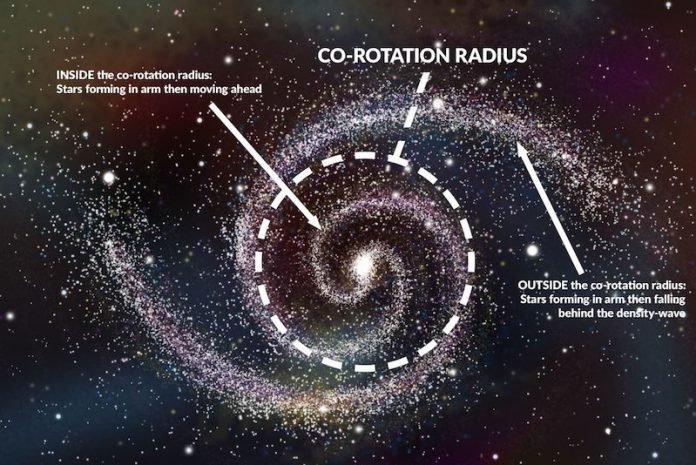
In a new study, researchers have made a new discovery that may explain how disk galaxies maintain the shape of their spiral arms.
Their finding supports the theory that the spiral arms are created by a wave of denser matter.
The matter creates the spiral pattern as it travels across the galaxy.
The research was conducted by University of Arkansas astrophysicists.
Disk galaxies are characterized by their spiral-shaped arms and they comprise 70% of known galaxies. The Milky Way is a disk galaxy.
The structure of spiral arms in disk galaxies has been a mystery. It is not clear what causes the shape of these spirals, or why they have certain numbers of arms.
One theory that could solve the mystery is the “density wave theory”, which suggests that the arms of disk galaxies are not formed from static bundles of stars.
Instead, these arms are waves of denser areas that move through the stars.
In the study, the team provided evidence for the density wave theory.
They examined stars of different ages and compared their locations to that of the center of the density wave.
The researchers examined images of galaxies in the NASA/IPAC Extragalactic Database.
This database is operated by the NASA Jet Propulsion Laboratory at the California Institute of Technology.
For each galaxy, the team examined the images of different wavelengths of light. These images represent stars of different ages.
They found that each group of stars formed an arm with a slightly different “pitch angle”.
The angle is that of the arm in relation to the center of the galaxy.
They compared these different angles to the angle formed by the center of the density wave.
The results showed that the location of these groups of stars matches the prediction of the density wave theory.
The team suggests that their study provides evidence for why the spiral arms maintain their shape.
Future work needs to examine what creates denser waves.
One author of the study is Ryan Miller, visiting assistant professor of physics.
The study is published in The Astrophysical Journal.
Copyright © 2019 Knowridge Science Report. All rights reserved.



